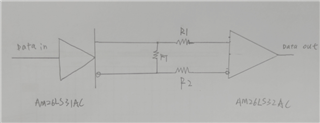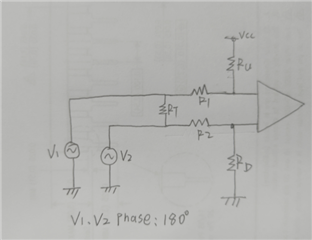The following two schemes are used for signal transmission. The maximum frequency of the signal is 5KHz and the length of the transmission line is less than 10m.
In order to ensure the integrity of signal transmission and the unknown state will not appear when the transmission line is disconnected.
To know how the following two schemes match resistance, what is the recommended circuit schematic diagram?
① Am26ls31cns (send) and am26ls32acns (accept)
② Am26ls31cns (send) and am26lv32cd (accept)




